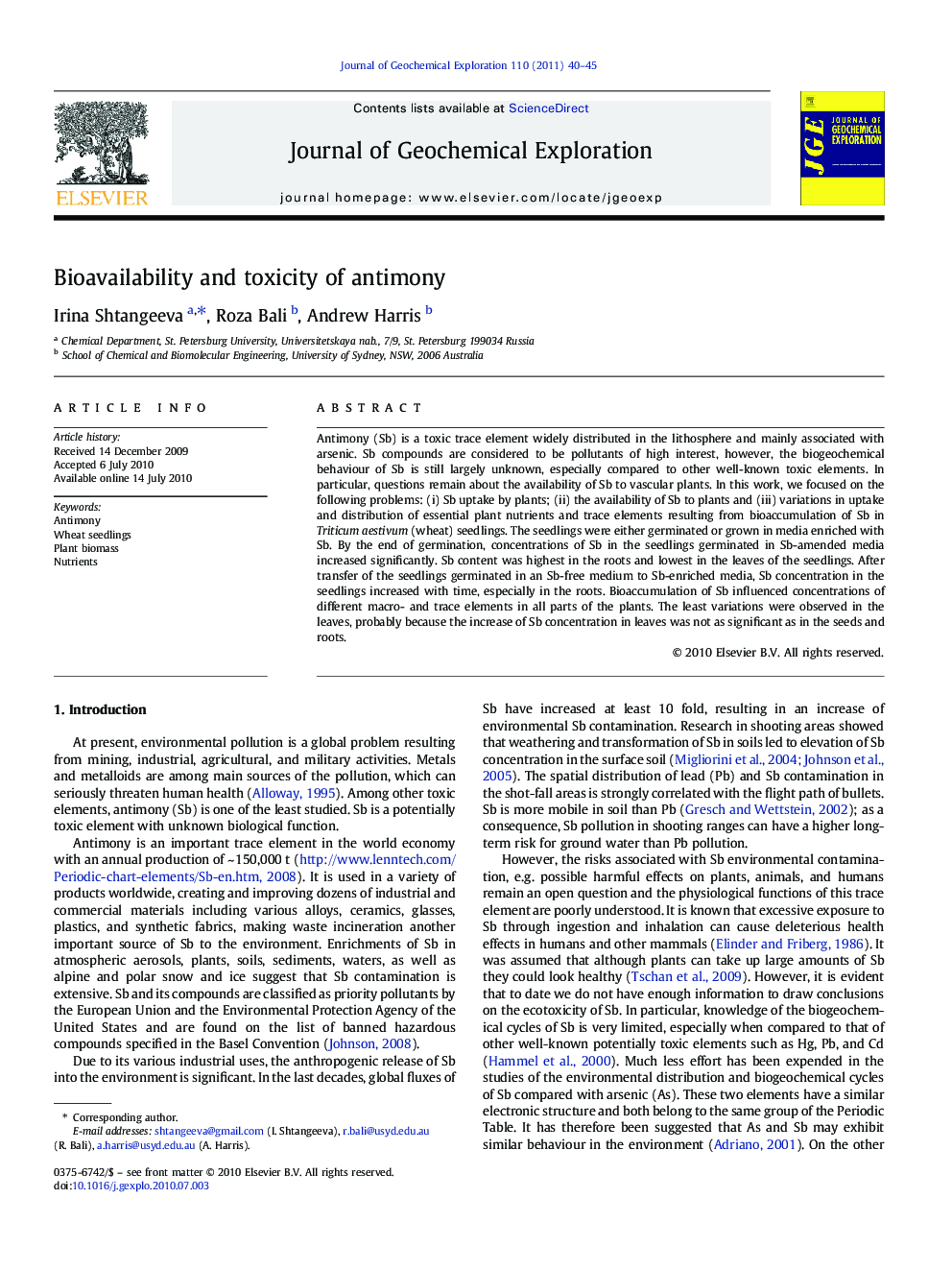| Article ID | Journal | Published Year | Pages | File Type |
|---|---|---|---|---|
| 4457839 | Journal of Geochemical Exploration | 2011 | 6 Pages |
Antimony (Sb) is a toxic trace element widely distributed in the lithosphere and mainly associated with arsenic. Sb compounds are considered to be pollutants of high interest, however, the biogeochemical behaviour of Sb is still largely unknown, especially compared to other well-known toxic elements. In particular, questions remain about the availability of Sb to vascular plants. In this work, we focused on the following problems: (i) Sb uptake by plants; (ii) the availability of Sb to plants and (iii) variations in uptake and distribution of essential plant nutrients and trace elements resulting from bioaccumulation of Sb in Triticum aestivum (wheat) seedlings. The seedlings were either germinated or grown in media enriched with Sb. By the end of germination, concentrations of Sb in the seedlings germinated in Sb-amended media increased significantly. Sb content was highest in the roots and lowest in the leaves of the seedlings. After transfer of the seedlings germinated in an Sb-free medium to Sb-enriched media, Sb concentration in the seedlings increased with time, especially in the roots. Bioaccumulation of Sb influenced concentrations of different macro- and trace elements in all parts of the plants. The least variations were observed in the leaves, probably because the increase of Sb concentration in leaves was not as significant as in the seeds and roots.
Research highlights► Increase in Sb concentration in growth media led to suppression of plant development. ► Accumulation of Sb influenced concentrations of macro- and trace elements in plants. ► Sb is more toxic to plants than was expected from previous studies.
